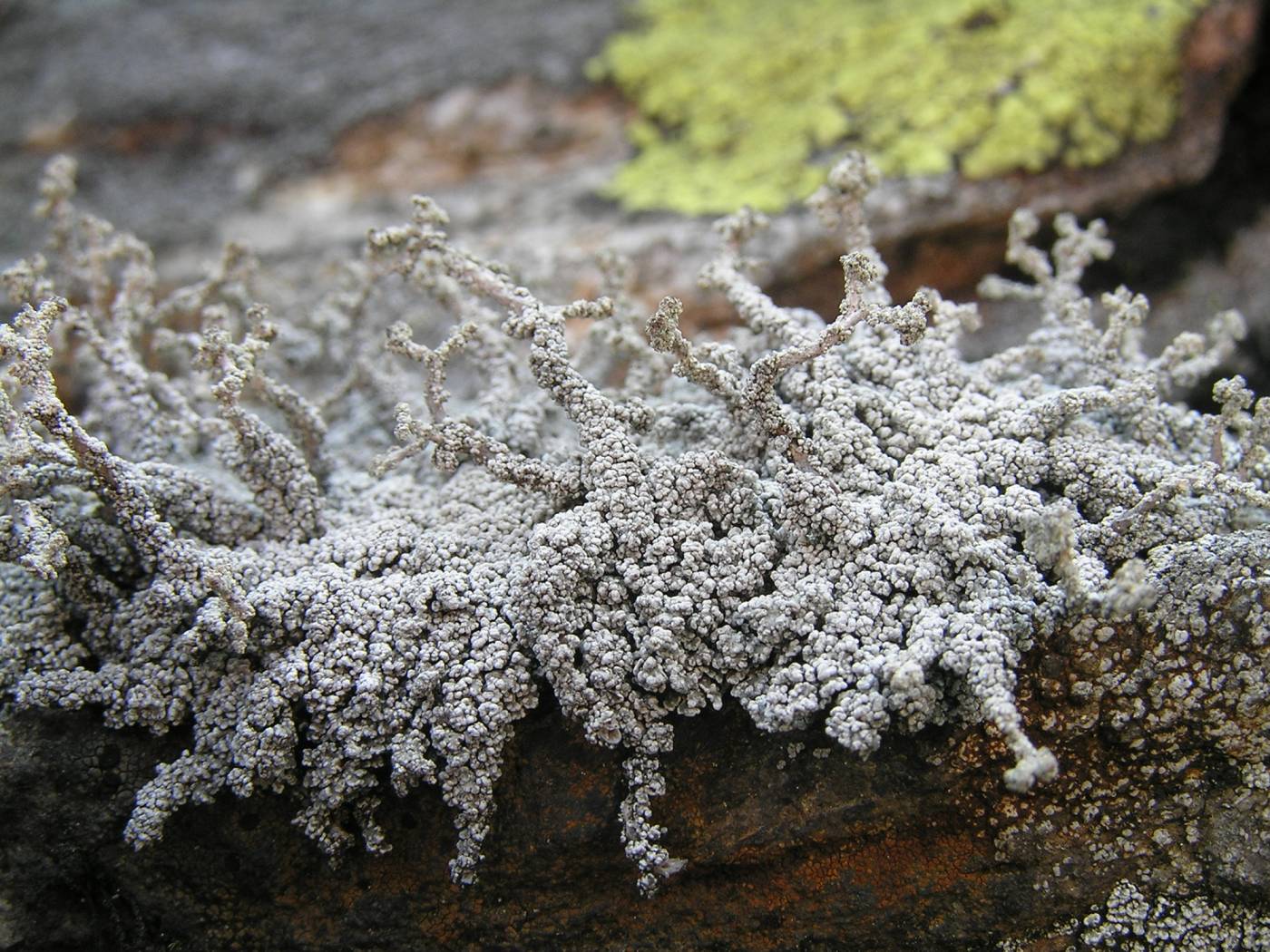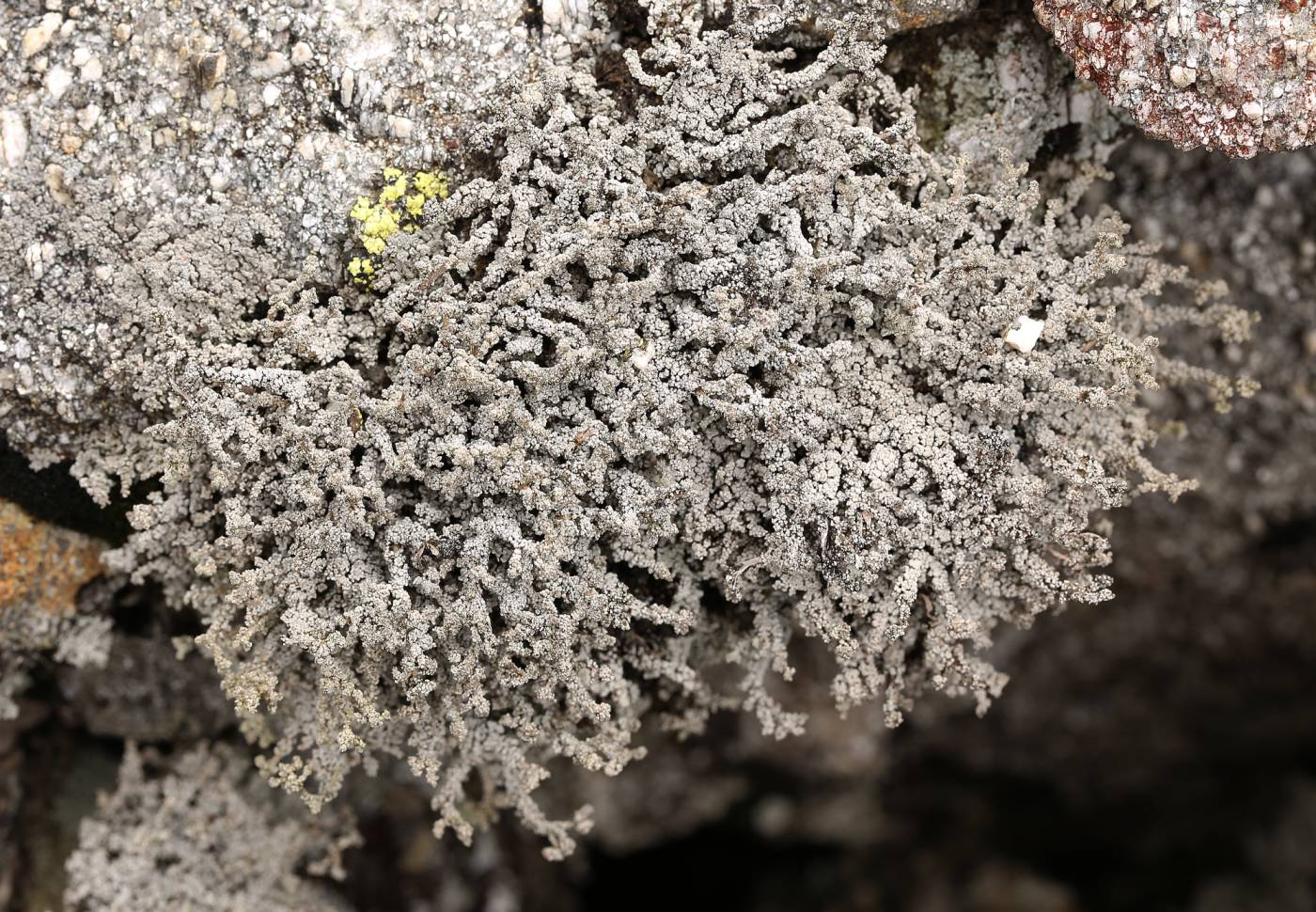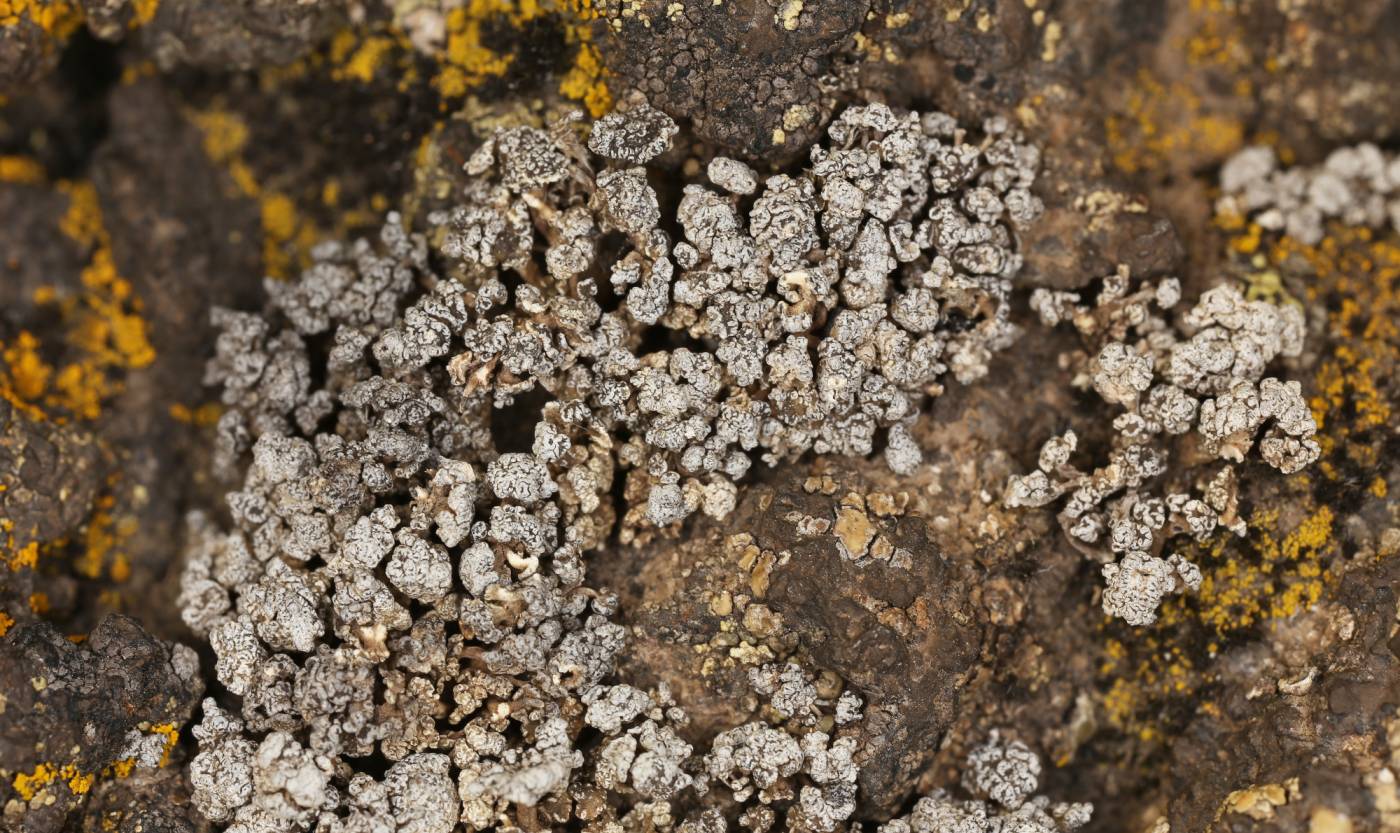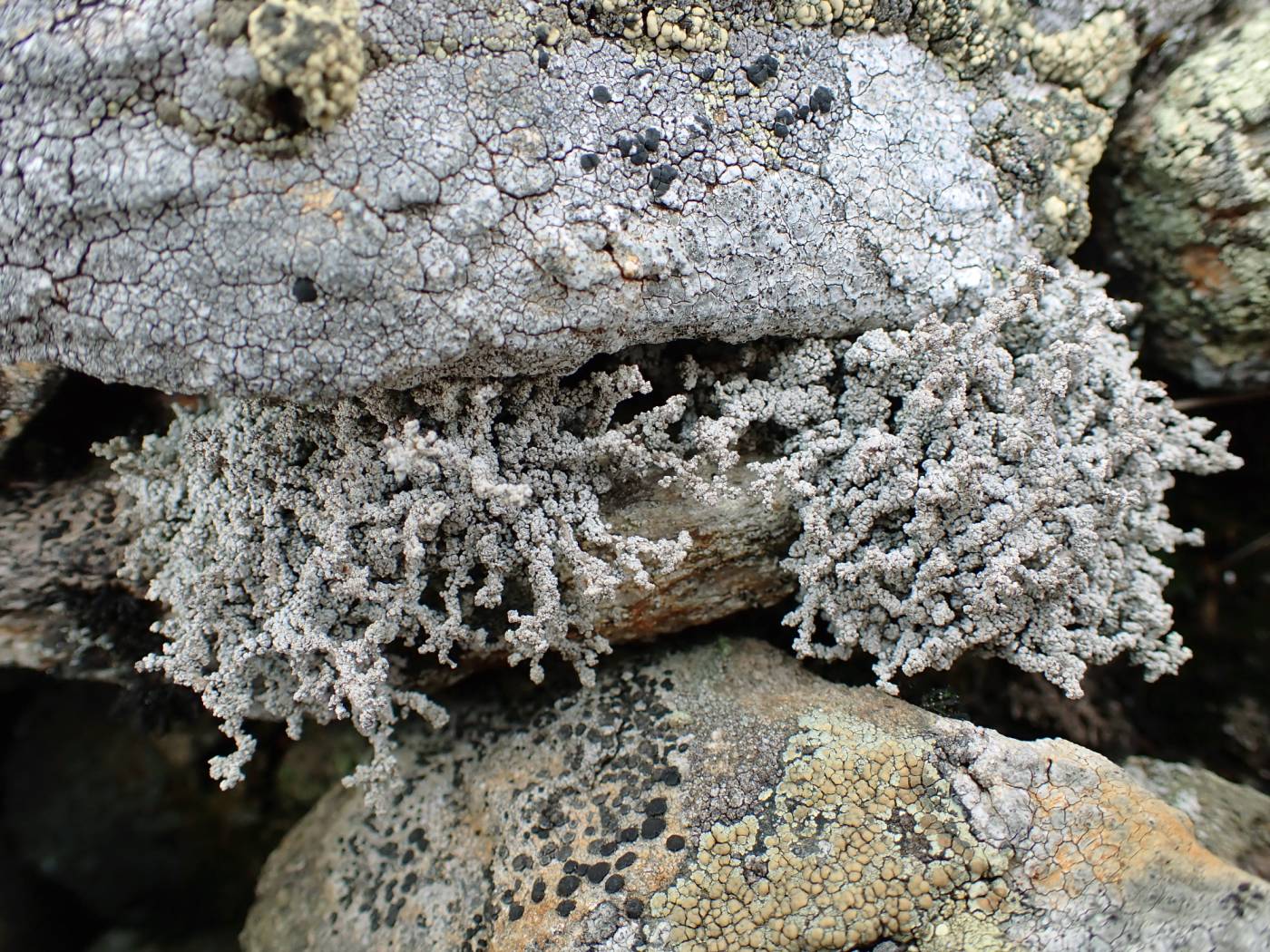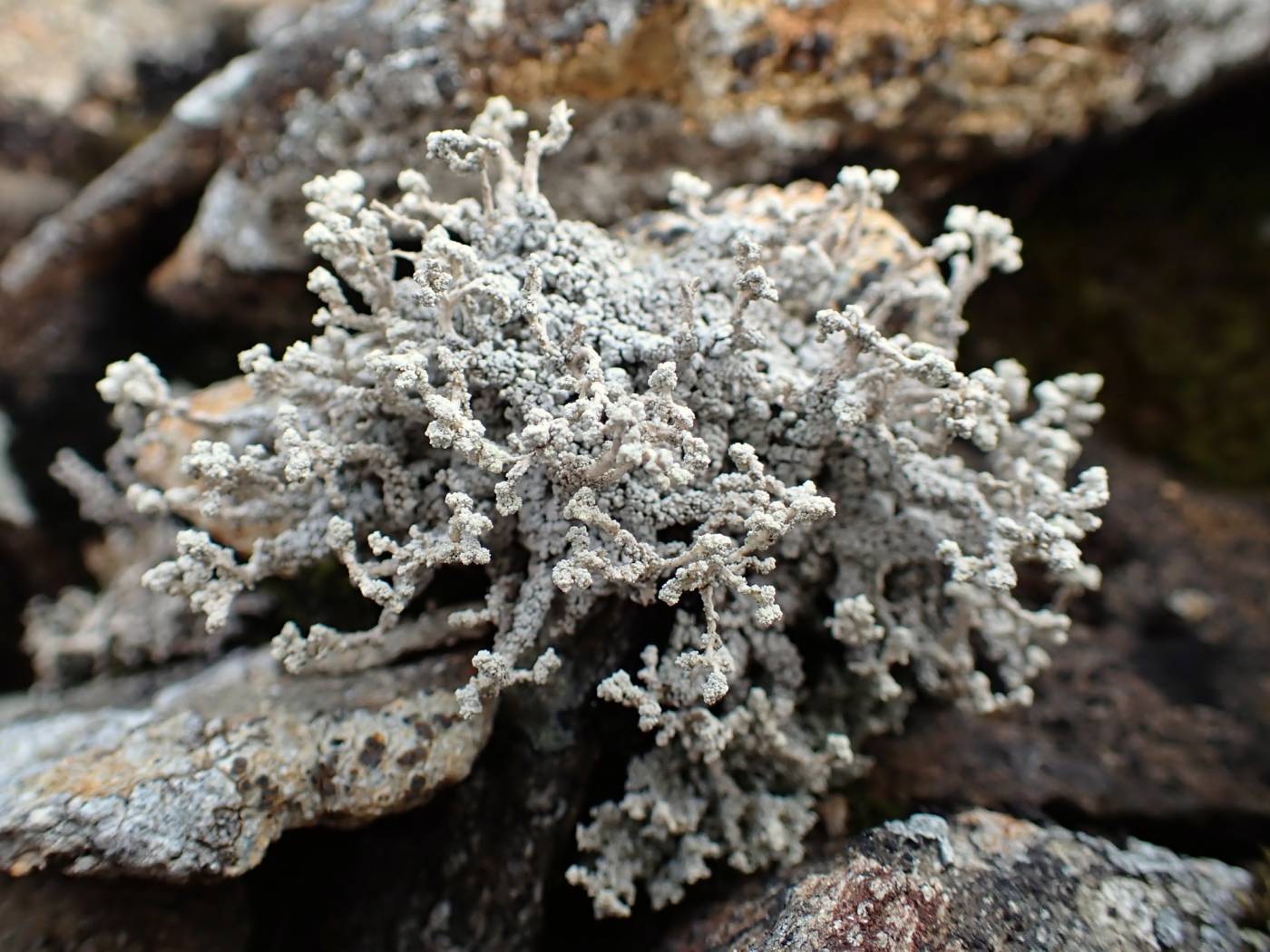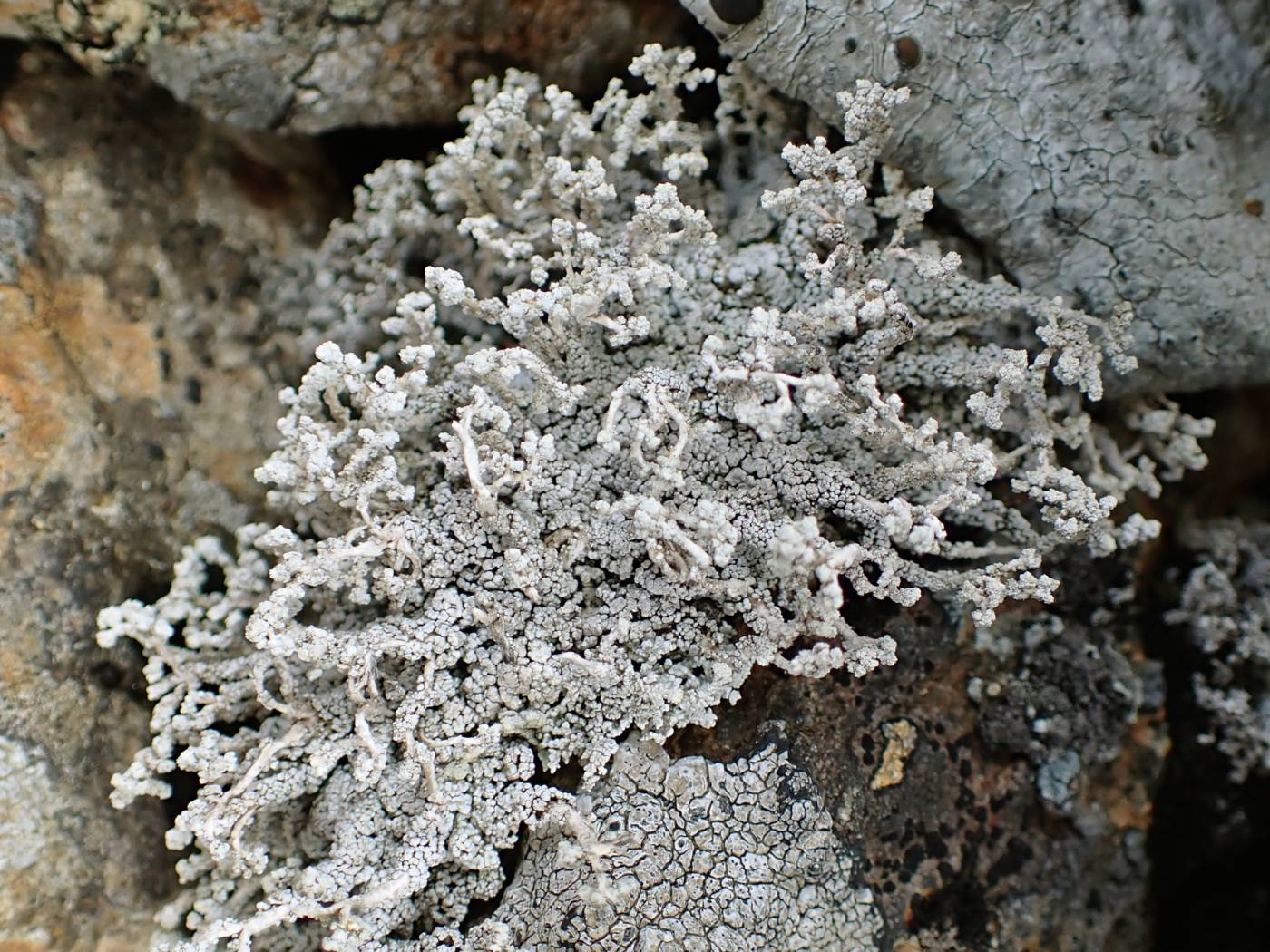Stereocaulon vesuvianum sensu lato is quite well-recognizable based on the presence of stictic acid (Pd+ orange) and peltate (shield-shaped) phyllocladia with a dark olivaceous centre and paler margin. It is one of the most common and most abundant Stereocaulon taxa, known from almost all the continents. In grows on various types of siliceous and volcanic rocks, mainly on well-lit stands. Less commonly, it is also found on soil or humus. It might colonise extreme habitats, such as relatively fresh lava fields with no vegetation. It can be found in montane or xerothermic communities. In the Czech Republic, it is scattered from middle to high elevations, mainly on screes or anthropogenic substrates, such as heaps and spoil piles formed by metal mining.
European populations of S. vesuvianum represent more species; S. vesuvianum s. str. is mainly the Mediterranean sexual species, frequent for example on volcanic substrates. In contrast, central European populations frequently develop globose soralia at tips, apothecia are rare and the pseudopodetia are simple or sparsely branched, usually in upper half. This taxon is a boreal-montane to arctic-alpine and occurs usually on acidic siliceous stones and rocks (Vančurová et al. 2021). Taxonomically, it corresponds to var. nodulosum (Wallr.) Lamb, described also as S. denudatum Flörke (Lamb 1977).
Literature: Vančurová L., Malíček J., Steinová J. & Škaloud P. (2021): Choosing the right life partner: Ecological drivers of lichen symbiosis. – Frontiers in Microbiology 12: 769304 [18 p.]. Lamb I. M. (1977): A conspectus of the lichen genus Stereocaulon (Schreb.) Hoffm. – Journal of the Hattori Botanical Laboratory 43: 191–355.
taxonomic classification:Ascomycota → Lecanoromycetes → Lecanorales → Stereocaulaceae → Stereocaulon
Red List (Liška & Palice 2010):VU – vulnerable
Red List (Malíček 2023):C3 – endangered
Occurrence in the Czech Republic
All records: 67, confirmed 40. One click on a selected square displays particular record(s), including their source(s).
